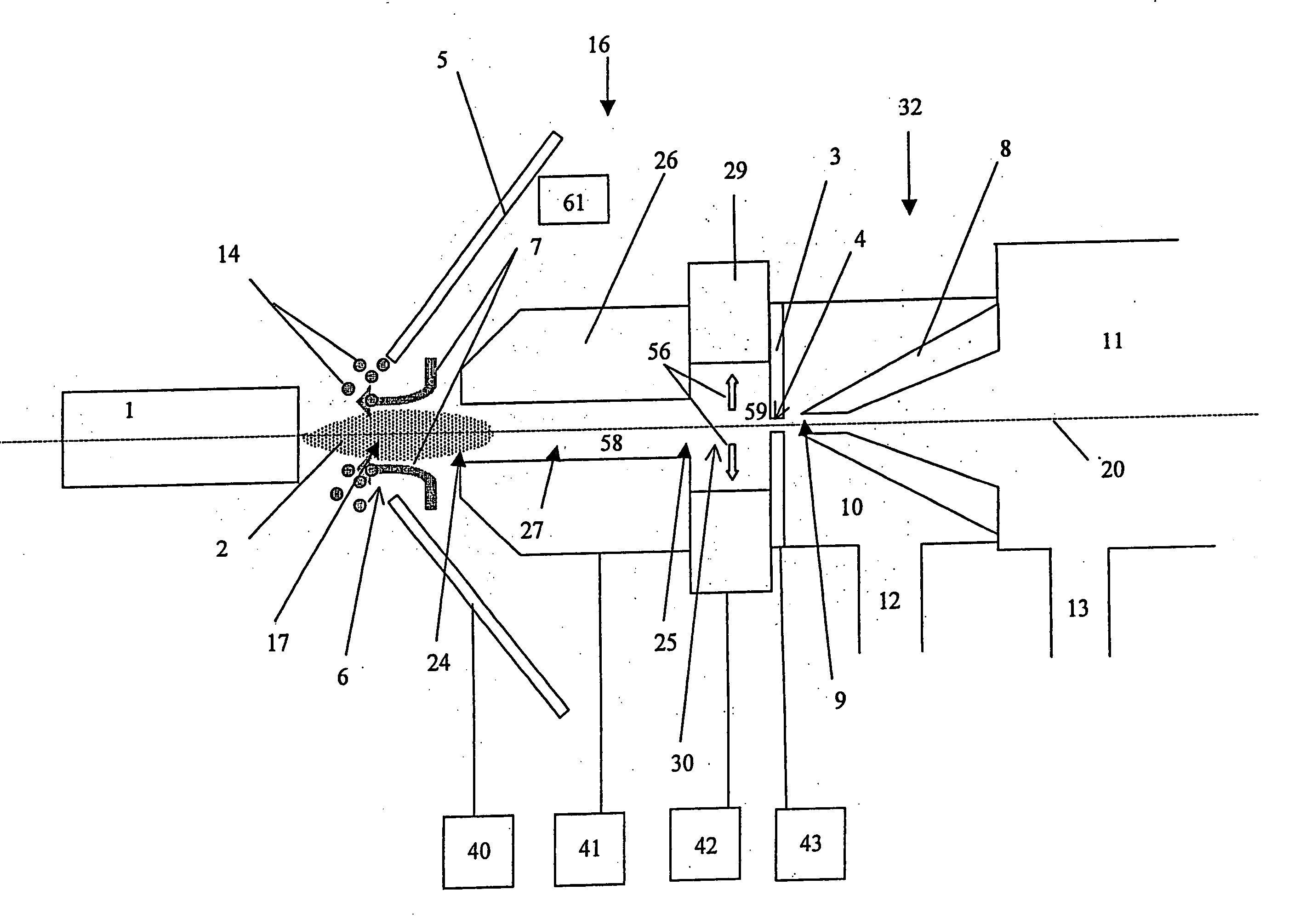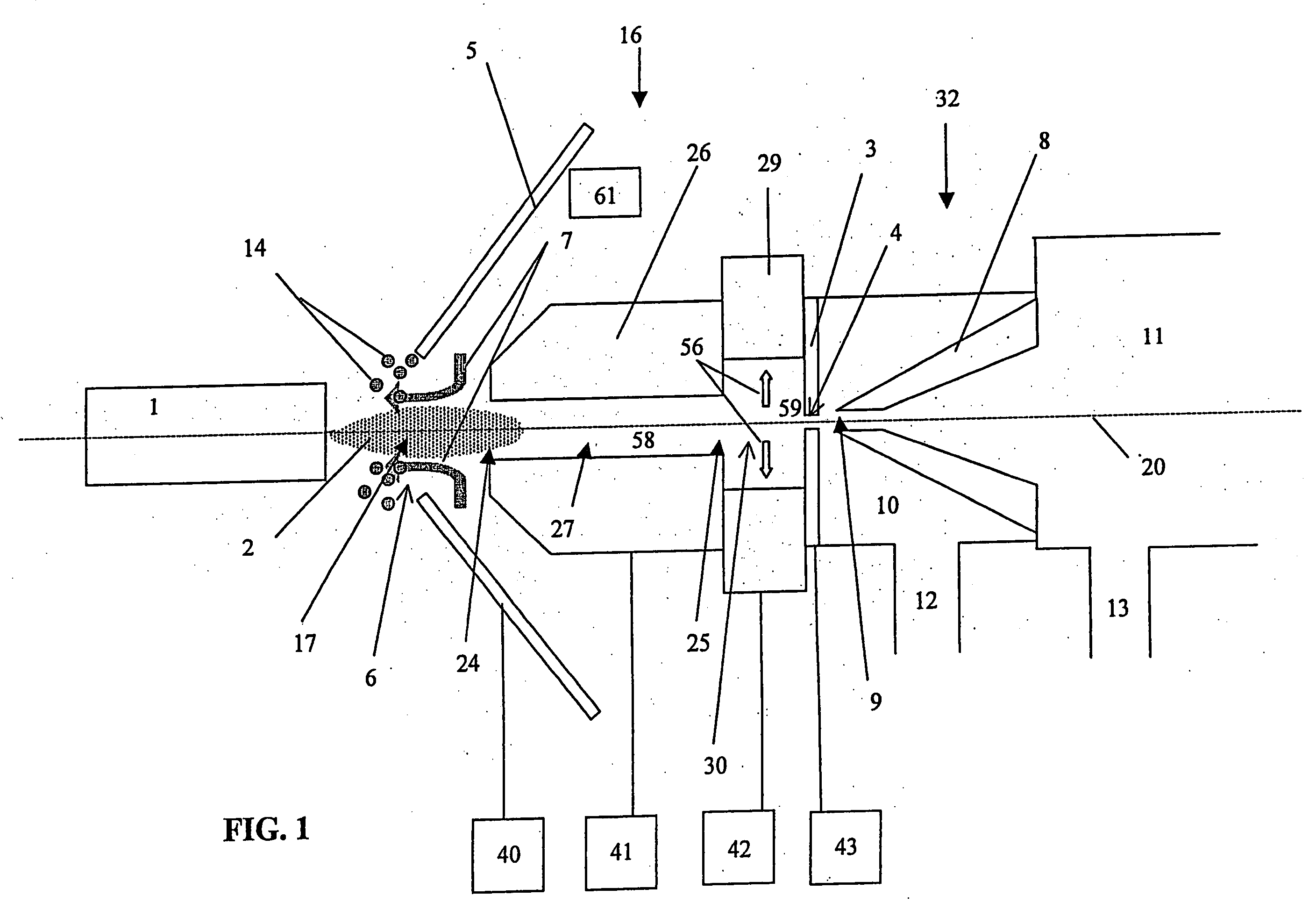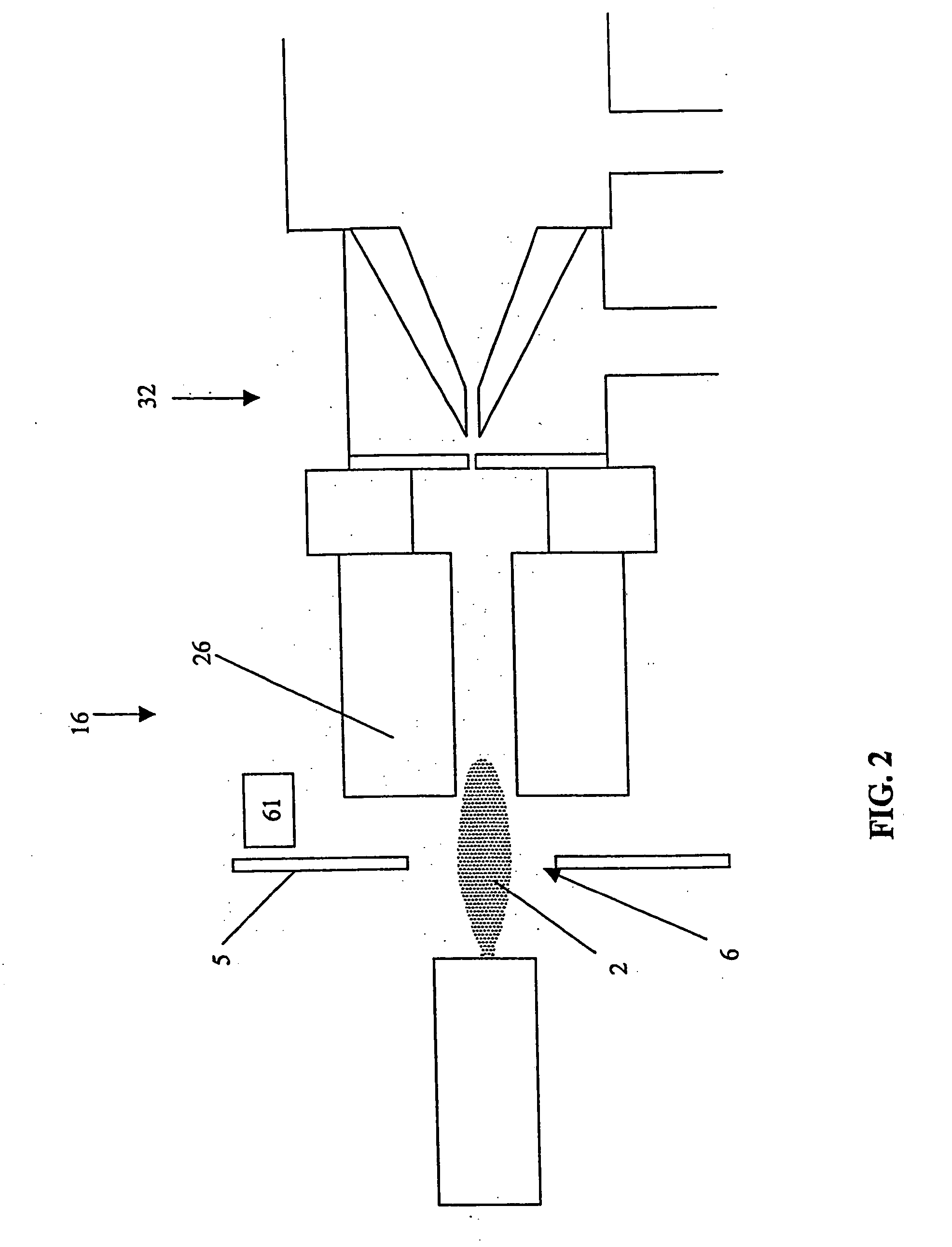Atmospheric pressure charged particle discriminator for mass spectrometry
- Summary
- Abstract
- Description
- Claims
- Application Information
AI Technical Summary
Benefits of technology
Problems solved by technology
Method used
Image
Examples
Embodiment Construction
[0023] Referring now to the drawings, FIG. 1 is an illustration according to one embodiment of the present invention, which shows an atmospheric pressure interface generally indicated by 16. The interface 16 is positioned between an ion source 1 and the mass spectrometer 32, the interface 16 comprising of at least one interface cell, described as follows. Ions from the ion source 1 pass into the mass spectrometer 32 comprising of vacuum chambers 10 and 11 through apertures 4 and 9, respectively. The pressure in each of the vacuum chambers 10 and 11 is step-wise reduced by vacuum pumps 12 and 13, respectively. The aperture 9 mounted in the partition 8 between the vacuum stages restricts neutral gas conductance from one pumping stage to the next while the aperture 4 mounted in the partition 3 restricts the flow of gas from atmosphere into the vacuum chamber 10. The pressure between the aperture 4 and the ion source 1 is typically at or near atmospheric pressure.
[0024] The ion source ...
PUM
 Login to View More
Login to View More Abstract
Description
Claims
Application Information
 Login to View More
Login to View More - R&D
- Intellectual Property
- Life Sciences
- Materials
- Tech Scout
- Unparalleled Data Quality
- Higher Quality Content
- 60% Fewer Hallucinations
Browse by: Latest US Patents, China's latest patents, Technical Efficacy Thesaurus, Application Domain, Technology Topic, Popular Technical Reports.
© 2025 PatSnap. All rights reserved.Legal|Privacy policy|Modern Slavery Act Transparency Statement|Sitemap|About US| Contact US: help@patsnap.com



